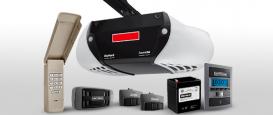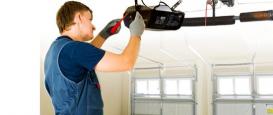Garage Door Springs
When your garage door spring breaks, it can set off a host of other, more unpleasant problems. That's why it's extremely important to pay close attention to your spring at all times, keeping it well oiled and consistently test it for balance. Many homeowners don't even know that a spring breaks until they go to manually lift their door. This, however, is not the desired outcome. As someone who wants their garage door to last, it's extremely important to keep close tabs on your spring or springs. Here are a few things to look out for while tending to your garage door spring.
Balance
Your springs are built to aid your garage door's opening and closing function. As such, they're built to last quite awhile. However, it helps to know what kind of spring you're working with in order to be fully aware of your spring's shelf life. If you have one single spring located at the top of your door, you're dealing with a torsion spring. These are long-lasting springs that can go for about 20,000 open and close cycles without a hitch. If you have two springs, you're dealing with the lighter-weight extension springs, which last about 10,000 cycles. Whatever type of spring you're working with, keeping them in balance is important. The way to test your springs' balance is to manually open your door every so often to make sure the pressure is evenly distributed. If you notice that your door is out of balance, your spring may be broken or it might be about to break.
Tension and Safety Cables
When a spring breaks, two safety cables exist as a way to take on the extra weight of the door and aid its continued function. However, these cables are not equipped to function in the same way as the strong, high-tension springs themselves. This means that when the safety cables are relied upon too much, the weight of your garage door could get unevenly distributed, leading to bigger issues like track warping or damage. If used too long, these cables could also begin to see some damage, like fraying or breaking. This can lead to even worse track-related problems. To avoid these and other issues, always make sure to regularly test your springs for balance and act on problems the moment they occur. Don't let your safety cables act as stand-ins for your springs.
Personal Safety
Your garage door springs are extremely tightly wound and are carrying a ton of tension. For this reason, it's always best to call in a professional for all spring-related issues. While it is possible to replace a spring yourself, it requires having the right tools and knowledge for the job to avoid serious home damage and injury. It's important to keep this danger in mind even if you're just measuring your spring for a replacement part. If you don't feel comfortable trying to fix, measure, or test a spring by yourself, don't worry. Give an expert a call and have them take care of the issue or walk you through the process step by step.





